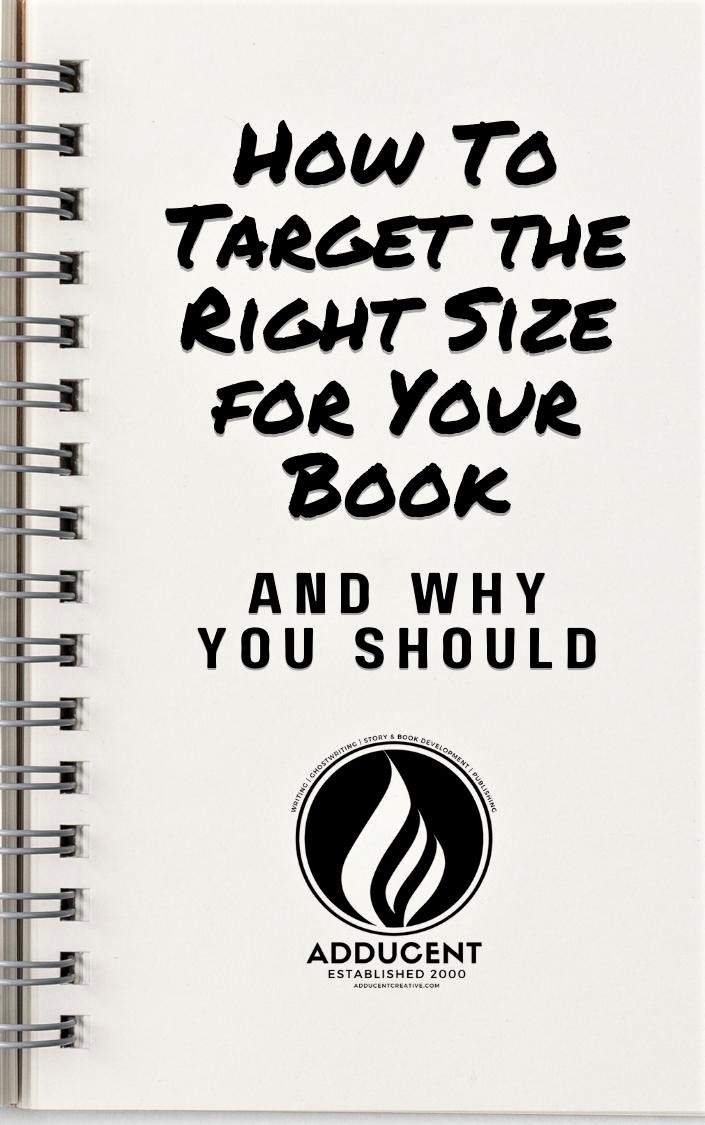Perhaps you want to write a book or have one written for you. And when it comes to size, you think about the number of pages. Non-professional writers often do. But you should not focus on the page count. Instead target the right size for your book.
I’ll explain.
Writing clients often tell me they want their book to be ‘XXX’ hundred pages… 200, 400, etc. Usually a round number. Sometimes they’ll give an example. Something like this: “My story’s a bit like ‘Outlander,’ time travel and romance. Fictional but based on actual events in a different country and setting. From the present to two centuries ago and back to the present. So, maybe my book should be about the same size.”
It takes experience to judge the right length for a story, and professional writers use the market to gauge the parameters. But the number of pages is not what you should use as your guide to honing the plan for a book. Instead, use a word count target. I’ll get into that further, but first, here is some context.
One of my current projects is a Historical Fiction series that averages over 176,000 words per book. In a 6-inch by 9-inch format: Book One is 151,550 words at 422 pages. Book Two is 155,096 words at 436 pages. Book Three is 166,685 words at 478 pages. Book 4 (ending the epic saga), currently in editing and the largest, will be approximately 233,000 words.
Book One in the fiction series Outlander by Diana Gabaldon is 850 pages, 255,781 words (format: 6.11-inch width x 1.42 spine x 9.23 length). To give you a nonfiction example: ‘Who Moved My Cheese’ by Spencer Johnson is 25,504 words, 96 pages in 5 x 6.75 format. And ‘If You Tell: A True Story of Murder, Family Secrets, and the Unbreakable Bond of Sisterhood’ by Gregg Olsen is 115,391 words, 431 pages in 5.5 x 8.25 paperback format.
As with any published book, the page count includes all parts (not just the narrative) of the book. Front matter comprises the Title Page, Copyright Notice, Table of Contents, and often an opening statement by the author or an epigraph (to set the story’s tone to come). It can also contain other information the author—and story—might require to help the reader. The series project I’m working on includes 6-8 maps per book, a historical setting preface, a recap of events in the preceding books, a Dramatis Personae (a guide to the cast of characters), and a book-specific opening epigraph. In the back (the back matter), the last page is the author/client’s bio. With some variation, all published books have front and back material that adds to the page count of the actual narrative.
So—and this is not uncommon—I often walk clients through how the page count of a print book is affected by its format. A 50,000-word book in a 5×8 Trade Paperback format will have more pages than the same number of words in a 6×9 book. The publisher or the self-publisher will determine what book size/format they want to produce the book.
When discussing writing, co-writing, and ghostwriting projects, I focus on word—not page—count. I can then set precise writing goals using a target word count and establish the work’s time frame. When working with a client, those goals become a contractual milestone schedule of deliverables for their project. It includes the Planning & Development stage (the story outline, initial scene/chapter list, and writing plan), the Writing stage (number of words delivered each month), the Internal Edit stage (writer/client collaborative), and if included in the contract, a Post-Draft Edit period of writer collaboration with the client’s third-party editor.
If you want to write a book, I recommend you set a word count target and use it to plan for story development and the actual writing (your word count goals per month). Below are average word count or word count ranges for works of fiction and nonfiction. These are important because a book intended to be sold commercially is a product, and there are market expectations. A professional writer or ghostwriter will know that market if you plan to have your book written for you. Still, you need to know it too.
Suppose the book you want to write (or have written) is complex, with multiple characters, story arcs, settings, and locations. [See what I mentioned above about the word count size of Outlander and the series I’m working on for a client.] In that case, it will probably require planning for a higher word count than the following averages.
Fiction
Based on an analysis of the top 15 sellers in the respective categories at Amazon:
- Fantasy: 109,000
- Historical: 102,000
- Horror: 102,000
- Literary: 98,000
- Science Fiction: 98,000
- Action/Adventure: 96,000
- Contemporary: 96,000
- Women’s Lit: 94,000
- Mystery/Thriller/Suspense: 91,000
- Romance: 91,000
- Crime: 89,000
- Religious: 75,000
- Erotica: 58,000
Nonfiction
- How-to / Self-Help, Career, and Education: 40,000–50,000 words
- Standard Nonfiction: 70,000 to 80,000 words
- Creative Nonfiction: 80,000 to 100,000 words
- Memoir / Biography: 60,000 to 120,000+ words
Stories can and should find their natural length. Achieving that comes from professionally proofreading/developmentally editing drafts that follow the first. [The first draft should be used to work out the basic story, arcs, theme, and content.] Then refining all elements further, assessing, sometimes addressing, the flow and pace, and marking up for another round of editing/rewriting.
You can make the above process more efficient. Use the average word count for your book type as a guide. Make the optimal size of your book an early consideration in the planning process. It matters to your story development.
Dennis Lowery has ghostwritten 37 books (14 novels, 12 nonfiction, 9 memoirs, and 2 creative nonfiction) for clients. Two have been optioned for screenplay development. He has also worked on dozens of titles to help improve, develop, edit, and provide publishing assistance.

